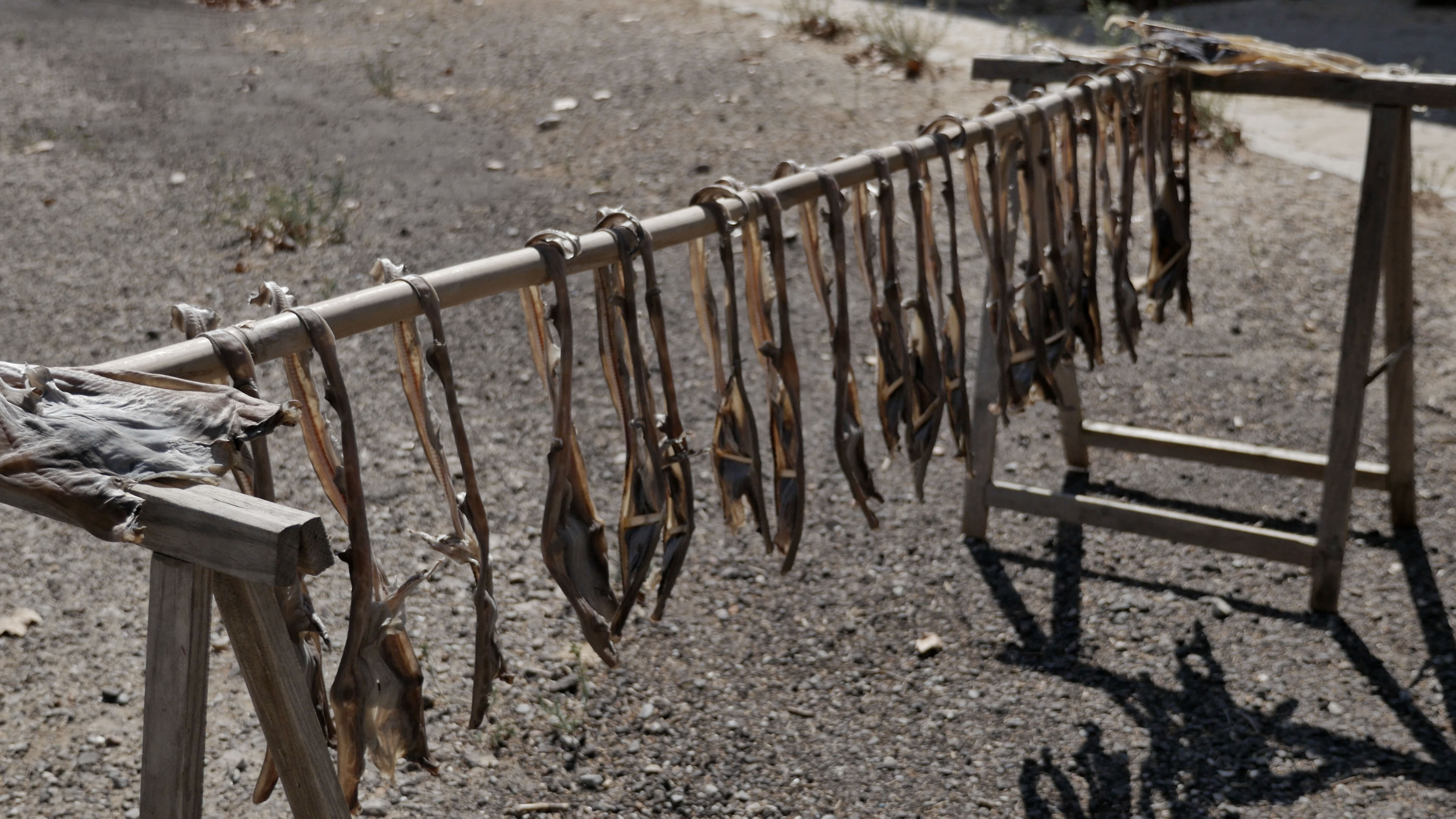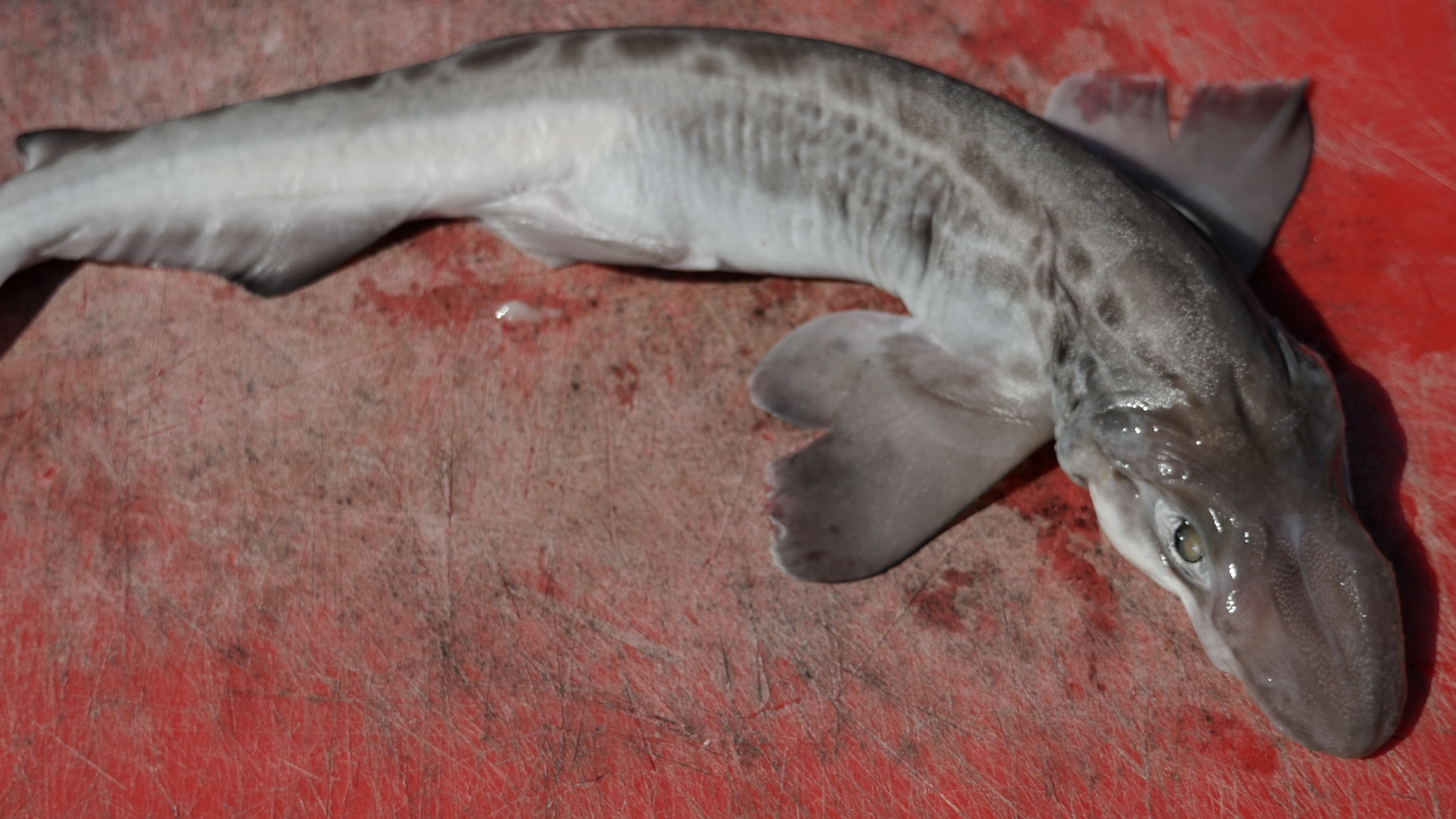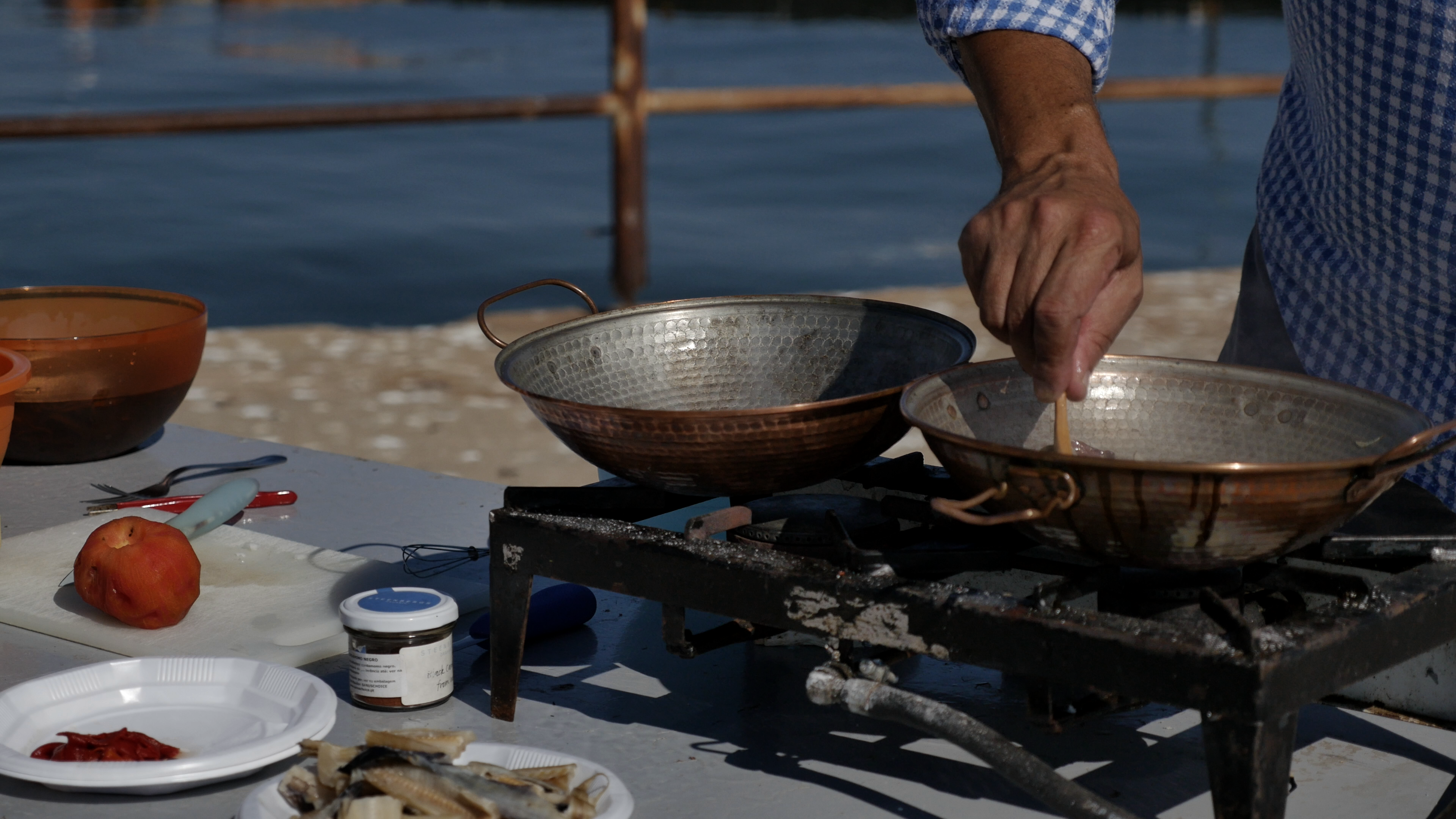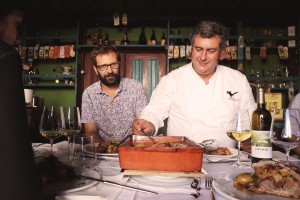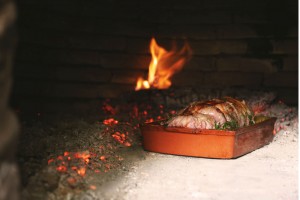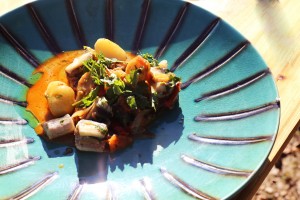In Portuguese it’s known as litão, in French chien espagnol, and in Spanish, pintarroja bocanegra. It’s a deep-sea species caught using a bottom trawl or hook apparatus between 200 and 500 or more metres.
Blackmouth catshark is generally scalded, salted and sun-dried then stored for several months before being eaten. Its abrasive dry skin was once used as sandpaper. Before being eaten, it must be soaked for about a day and can then be cooked as if it were salt cod, in a caldeirada (fish stew) or feijoada (with beans) or even in a cataplana.
The consumption of blackmouth catshark is ineradicably linked to the city of Olhão and its strong fishing tradition. The story goes that there was always an abundant supply of blackmouth catshark at the docks of the fishing port so it was never given great commercial value. But since it can be dried and eaten later, the poor of Olhão began to use it in times of scarcity, generally in the winter, and particularly on Christmas Eve to replace cod. That’s why demand for blackmouth catshark increases just before Christmas, rising to as much as 60€ a kilo and making it a dearer option than cod.
As our Toni Coelho says, “Christmas without blackmouth catshark just isn’t Christmas…”
Chef André Magalhães
